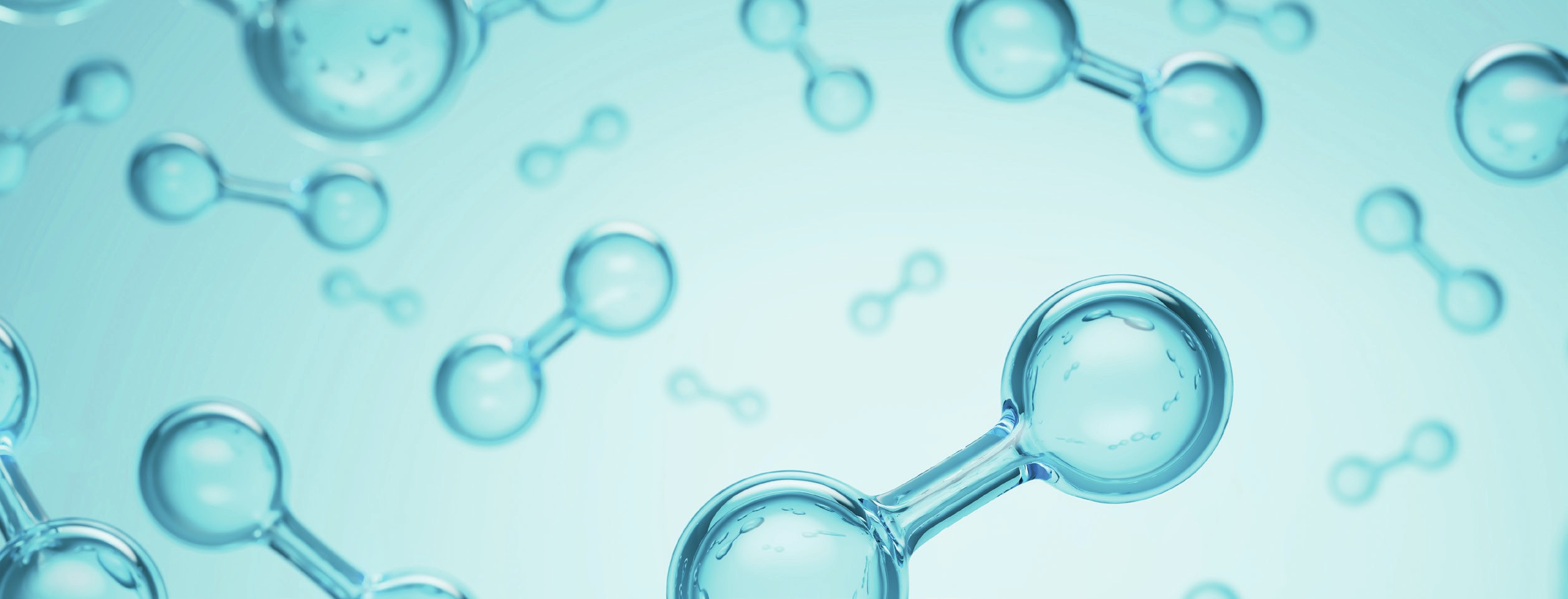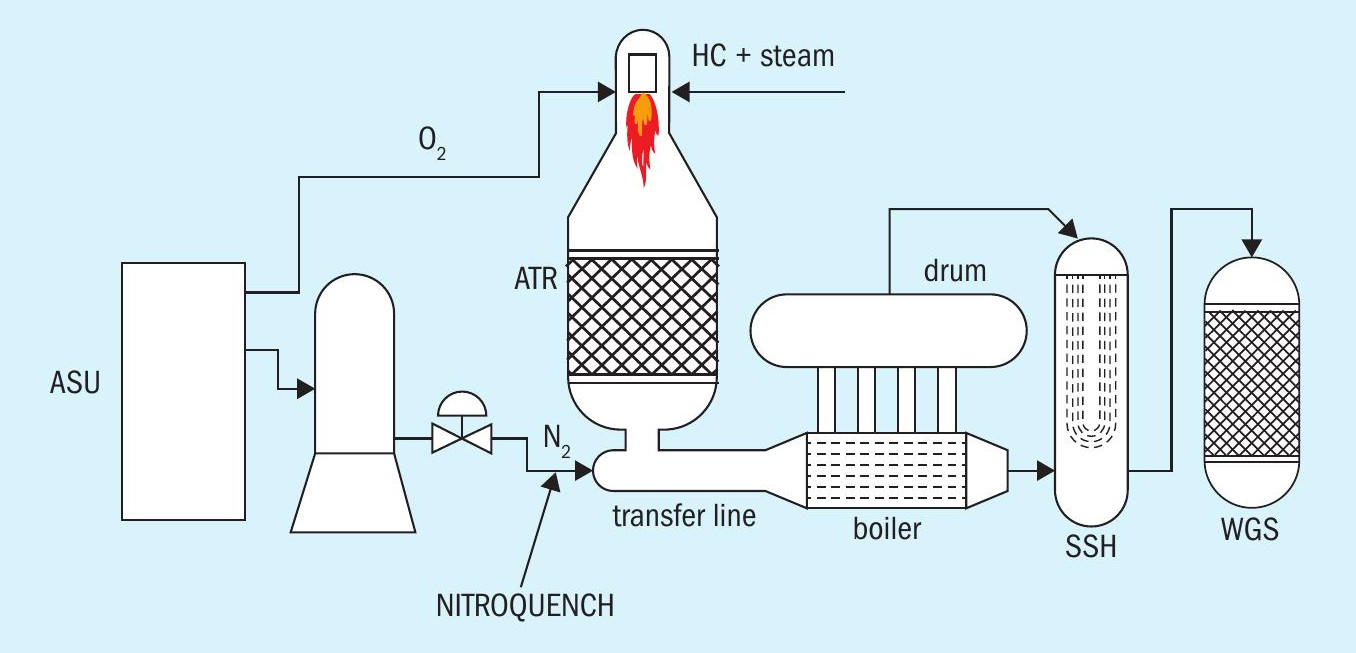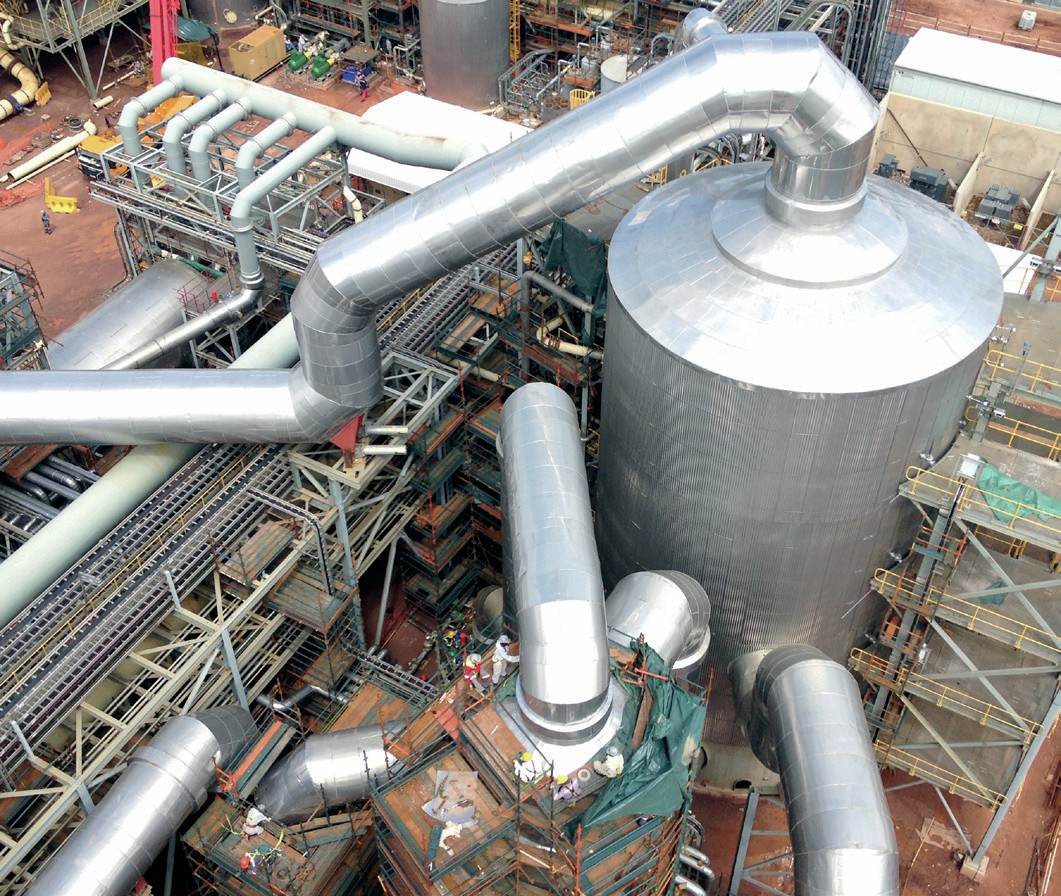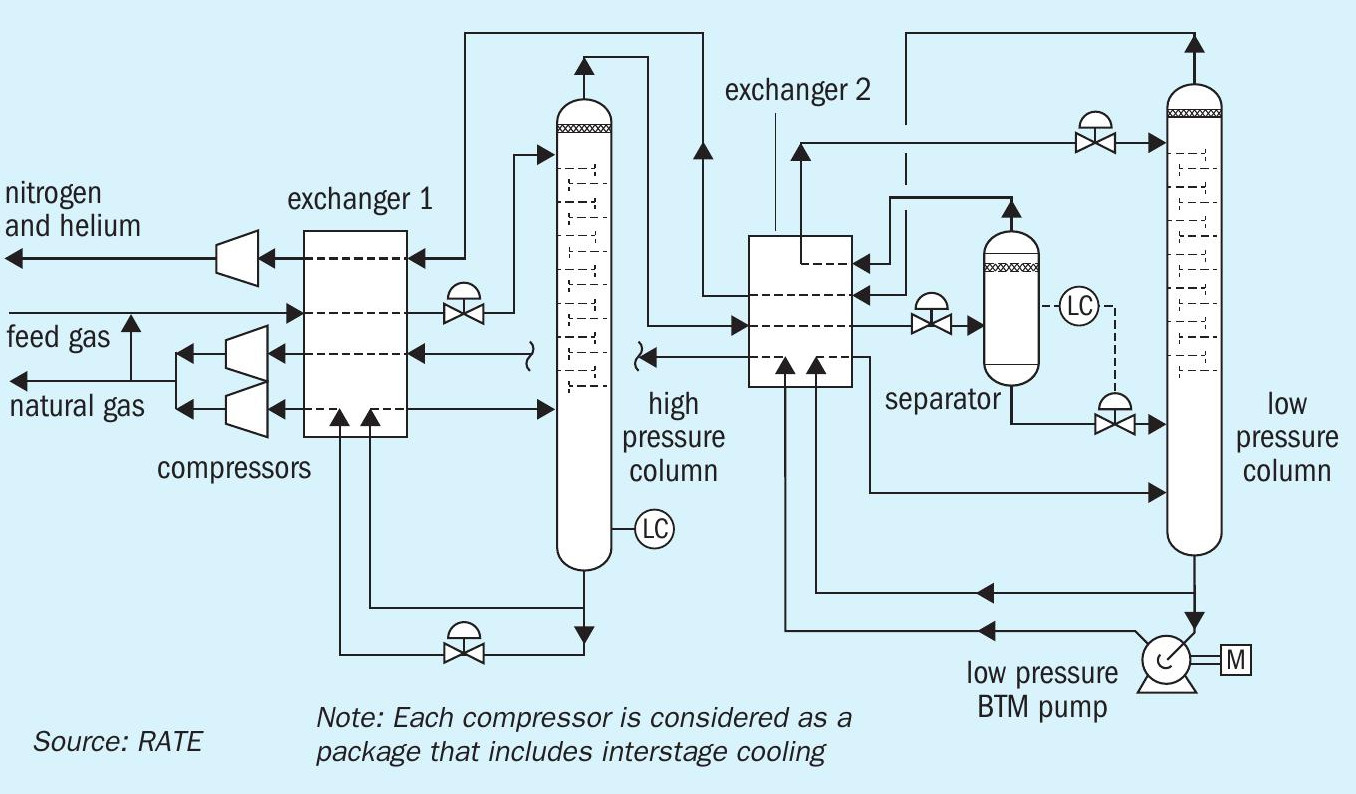Nitrogen+Syngas 380 Nov-Dec 2022
30 November 2022
The merits of methanol and ammonia co-production
PRODUCT INTEGRATION
The merits of methanol and ammonia co-production
Casale has developed a range of methanol-ammonia coproduction processes to match different requirements according to product capacity.
To derive the maximum benefit from economies of scale and to achieve the lowest production cost, it may be desirable to build a single-train plant that is designed for the integrated coproduction of ammonia and methanol.
For this purpose, Casale has developed the new Methanol-Ammonia-Casale-Coproduction (MAC2 ) processes. Having a single integrated plant to produce ammonia and methanol compared to two standalone ammonia and methanol plants offers big advantages as discussed below.
MAC2 8000™ process
MAC2 8000™ technology for the coproduction of ammonia and methanol is based on a common front-end section with a conventional steam-reforming unit followed by an auto-thermal reforming unit fed with oxygen and equipped with a Casale patented burner (see Fig. 1).
The produced syngas is then divided between the ammonia unit and the methanol unit.
The ammonia unit, for both warm and cold ammonia production, is based on Casale plate-cooled axial-radial MTS, third party technology for CO2 removal, syngas drying and the liquid nitrogen wash unit, and a Casale patented 3-bed ammonia synthesis converter with two internal interchangers.
The methanol unit is a high efficiency synthesis section installed with a Casale IMC plate-cooled axial-radial reactor. Final purification of the product is performed in a distillation section based on a three-column design.
The necessary oxygen and nitrogen are provided by a dedicated air separation unit.
A PSA unit is provided to recover hydrogen from the methanol synthesis loop purge which is then sent to the ammonia plant (syngas compressor suction).
The coproduction process is characterised by full flexibility to adjust the production of each product almost independently from the other.
The coproduction process is suitable for single line plants with an overall capacity of up to 8,000 t/d (ammonia + methanol) with a full range of splits between methanol and ammonia production.
Key benefits
MAC2 8000™ offers major capital cost benefits for the producer. Compared to independent new methanol and ammonia units, sized for the same capacities, the coproduction design strategy allows the installation of a single syngas generation section and the sharing of utilities and the operating and production facilities. Furthermore, the exploitation of hydrogen from the methanol plant leads to a proportional reduction of the ammonia plant front-end equipment size. Optionally, since carbon dioxide is balanced with ammonia, ammonia can be totally converted to urea, thereby maximising urea production.
Key technologies
Key technologies of the MAC2 8000™ process include:
- Casale reactors: pre-reformer, medium temperature shift, IMC methanol converter and ammonia converter;
- high-efficiency auto-thermal reformer;
- ammonia loop waste heat boiler.



MAC2 4000™ process
MAC2 4000™ technology for the coproduction of ammonia and methanol is based on a common front-end section with a conventional steam-reforming unit followed by a secondary reforming unit, for the ammonia train only, fed with air and equipped with a Casale patented burner (see Fig. 2).
The syngas, produced by the primary reformer, is divided between the ammonia unit and the methanol unit.
The ammonia unit, for both warm and cold ammonia production, is based on Casale axial-radial HTS and LTS, third party technology for CO2 removal and the methanation section, and a Casale patented 3-bed ammonia synthesis converter with two internal interchangers.
The methanol unit is a high efficiency synthesis section installed with a Casale plate-cooled IMC reactor. Final purification of the product is performed in a distillation section based on a two- or three-column design depending on the methanol plant capacity and energy efficiency targets.
A PSA unit is provided to recover hydrogen from the methanol synthesis loop purge which is then sent to the ammonia plant (syngas compressor suction).
Carbon dioxide from the CO2 removal stripper can be routed to the methanol synloop to increase the methanol plant capacity.
The coproduction process is characterised by full flexibility to adjust the production of each product almost independently from the other.
The coproduction process is suitable for single line plants with an overall capacity of up to 4,000 t/d (ammonia + methanol) with a full range of splits between methanol and ammonia production.
MAC2 4000™ is also applicable, as a general concept, for the revamping of existing plants.
In particular, for an ammonia plant revamping project for ammonia and methanol coproduction, the final optimal ratio between methanol production and ammonia production is up to 1 to 3. For example, a 1,600 t/d ammonia plant could provide 400 t/d of methanol and 1,200 t/d of ammonia. The MAC2 4000™ process is reversible and therefore the plant production ratio can be selected based on the main market indicators (methanol production can also be stopped to maximise ammonia production).
Key benefits
MAC2 4000™ offers major capital cost benefits for the producer. Compared to independent new methanol and ammonia units, sized for the same capacities, the coproduction design strategy allows the installation of a single syngas generation section and the sharing of utilities and the operating and production facilities. Furthermore, the exploitation of hydrogen from the methanol plant leads to a proportional reduction of the ammonia plant front-end equipment size. The CO2 injection in the methanol synloop is convenient for maximising the methanol production. Optionally, the design can be customised in order to balance carbon dioxide with ammonia, enabling total conversion of the ammonia to urea, thereby maximising urea production.
Key technologies
Key technologies of the MAC2 4000™ process include:
- Casale reactors: pre-reformer, high temperature shift, low temperature shift, IMC methanol converter and ammonia converter;
- high-efficiency secondary reformer;
- ejector ammonia wash system;
- ammonia loop waste heat boiler.
MAC2 4000M™ process
MAC2 4000M™ technology for the coproduction of ammonia and methanol is based on a front-end section based on pure steam reforming and sized for the methanol unit capacity (see Fig. 3).
The methanol unit is characterised by a high efficiency synthesis section installed with a Casale plate-cooled IMC reactor. Product final purification is performed in a distillation section based on a two or three-column design depending on the methanol plant capacity and energy efficiency targets.
The composition of the syngas from steam reforming is not optimal for methanol synthesis as it contains an excess of hydrogen (from downstream of the synthesis reactions) which must be purged from the synthesis loop. This hydrogen-rich stream, typically recycled as fuel to the primary reformer, can be more efficiently used for the synthesis of ammonia: a PSA unit is provided to recover hydrogen from the methanol synthesis loop purge which is sent to the ammonia plant (syngas compressor suction).
At the same time the ASU provides the nitrogen necessary for the ammonia synthesis.
The ammonia unit, for both warm and cold ammonia production, consists of a synthesis loop and refrigeration section only and is based on the Casale patented 3-bed ammonia synthesis converter with two internal interchangers.
The coproduction process is suitable for single line plants with an overall capacity of up to 4,000 t/d with an ammonia production of up to 25% of the overall production. MAC2 4000M™ technology can also be applied, as a general concept, for the revamping of existing plants. Similar, to the revamping of an ammonia plant, the revamping of a methanol plant with the MAC2 concept is reversible depending on market indicators.
Key benefits
MAC2 4000M™ offers major capital cost benefits for the producer. Compared to independent new methanol and ammonia units, sized for the same capacities, the coproduction design strategy allows the omission of the entire ammonia plant front end and sharing of utilities and the operating and production facilities.
Optionally, the design can be customised to recover the necessary CO2 from primary reformer flue gases, in order to balance carbon dioxide with ammonia, to enable total conversion of the ammonia to urea, thereby maximising urea production.
Key technologies
Key technologies of the MAC2 4000M™ process include:
- Casale reactors: pre-reformer, IMC methanol converter and ammonia converter;
- ammonia loop waste heat boiler.






